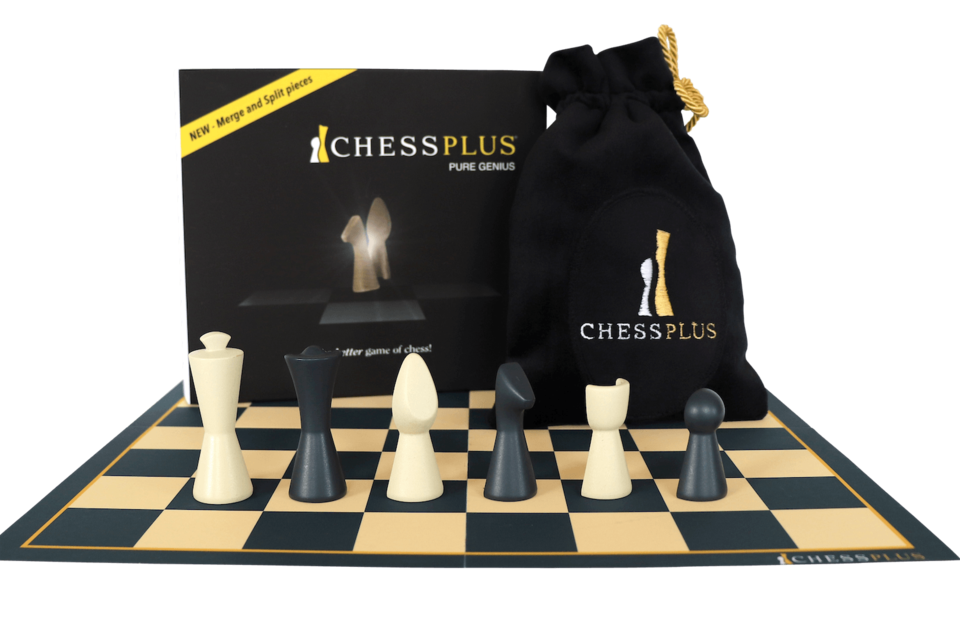Chess is, for myself, one of the first real games I learned to play. It forms part of the foundation of my love of board games along with crokinole, cribbage and rod-hockey, with checkers deserving of an honourable mention.
Since I learned how the ‘horse’ moves when I was in Grade 7, I’ve been a chess fan, if not a hard core player who has devoured the dozens of books on chess theory, nor memorized the many ‘standard’ opening approaches and defensive replies.
With my enjoyment of chess has come an equal interest in chess variants of which there are literally hundreds, some I’d rate as great, others offering little to interest me, and a few tried that are simply bad.
So when I got my hands on ChessPlus I went into playing the new variant, released in 2019, with an open mind.
To start the pieces in this edition, which does allow for regular western chess play, are quite nice, in a modern sculpt sort of way. This is not the largest, or heaviest of sets, but I was certainly satisfied by its general look, with one exception detailed further on.
So ChessPlus as a variant has some really simple rules that anyone who knows chess at all can understand in about two-minutes.
The game is played under standard chess rules with one difference – pieces can be merged to combine their powers, and merged pieces can be split back into their individual pieces. In some respects it reminds a bit of Plunder Chess a personal variant favourite. I’d still take Plunder Chess for its power stealing aspect, but there are thematic similarities.
To merge you simply use a turn to move one of your pieces into the square with another, where it essentially becomes a single piece combining the powers of both, (the king cannot merge). The merging is a full move.
A merged piece can move as either of its joined pieces, or can be split by moving a joined piece away individually. This provides more choices of course, and as merged pieces begin to populate the board the additional power of each piece in play is felt.
When a merged piece containing a pawn makes it to the other end of the board it is promoted to a queen. This is an obvious element of the game to the point ChessPlus comes with three extra queens per side.
It is possible, in theory to move a rook to merge with the pawn in front of it and next move use the rook movement to cross the board to create a queen.
However, when a merged piece is captured or promoted the merged piece leaves the board. It took us about half a game to realize the best course of action is to move that rook/pawn as far as the seventh rank, then next move advance the pawn alone to become a queen, keeping the rook in play.
The piece issue, in terms of look, comes to light when pieces are merged. It can be a bit difficult to tell a pawn/knight from a pawn/bishop, depending on its orientation to the angle you are looking at it. It means in-game you have to make sure to look a bit more closely, which seems reasonable, but in mid game when you have long played chess it can be more reactive and you miss it. You can of course allow move ‘take backs’ but father/son rivalry precludes that happening.
Other than that small quibble, I like this one quite a bit. It’s super simple to grasp if you play chess. It tends to quicken game because there is a power surge here, since you can work toward multiple queens in play earlier than any regular chess game, which in itself will endear ChessPlus to some.
And, since you can play regular chess with the set quite nicely, it’s a great starter set as you essentially get two games in one.
Check it out at www.chessplus.com
Thanks to fellow Adam Daniels for his help in running through this game for review.




